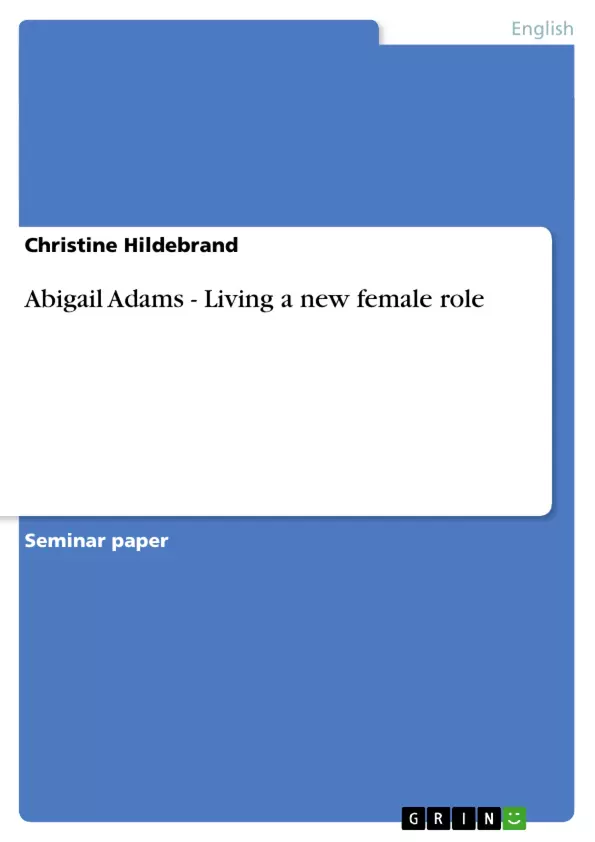Can Abigail Adams truly be regarded as a revolutionary of that time? Did she act in a revolutionary way? Did she even create a new female role during the American Revolution? If so, in what perspectives was this role revolutionary and new?
In order to answer these questions and investigate upon her conduct, the letters of Abigail and her husband between 1774 and 1777 will be the focus of this paper; they will be analyzed and interpreted in terms of the new female role. This corpus of letters is taken out of The Book of Abigail and John (1975). Herein the focus lies on Abigail’s perspective, on her perception and account of war experiences and on her thoughts and opinions about government and politics. In addition to this, John’s letters have to be taken into account as well, as he represents the addressee Abigail is writing to. His letters and the way he addresses her, the topics and his experiences he mentions and the advice he asks from his wife or gives to her, do shed light onto the person of Abigail Adams as well as influenced her.
Inhaltsverzeichnis (Table of Contents)
- The Letters of Abigail Adams
- Women in 18th Century American Society
- Abigail Adams - Living a New Female Role
- Domestic Sphere
- Housewifery
- Childrearing
- Abigail's Relationship to John
- Public Sphere
- Government and State
- Women Rights
- Domestic Sphere
- Republican Motherhood and Virtue – the New Female Ideology
- Republican Motherhood as a Pyrrhic Victory
Zielsetzung und Themenschwerpunkte (Objectives and Key Themes)
This paper aims to investigate the life of Abigail Adams during the American Revolution, examining her role as a woman in a time of profound social and political change. It explores whether she can be considered a revolutionary figure and analyzes the letters she exchanged with her husband, John Adams, to understand her perspective on the revolution, government, and society.
- Abigail Adams's role and impact during the American Revolution.
- The social status of women in 18th-century American society.
- The influence of republicanism and the development of the "Republican Motherhood" ideology.
- The challenges and complexities of women's rights in a newly formed nation.
- Abigail Adams's contribution to the development of a new female role.
Zusammenfassung der Kapitel (Chapter Summaries)
- The Letters of Abigail Adams: This chapter introduces Abigail Adams and provides context for the analysis of her letters. It highlights the significance of her correspondence as a primary source for understanding the revolutionary era and her personal perspective on the events of the time.
- Women in 18th Century American Society: This chapter examines the social and legal constraints faced by women in 18th-century America. It discusses the prevailing patriarchal system, the cult of domesticity, and the law of coverture, which severely limited women's rights and opportunities.
- Abigail Adams - Living a New Female Role: This chapter explores Abigail Adams's life within both the domestic and public spheres. It analyzes her role as a wife, mother, and housekeeper, as well as her involvement in political discussions and her advocacy for women's rights. It delves into her relationship with John Adams and how their correspondence reflects their individual perspectives on the revolution.
- Republican Motherhood and Virtue – the New Female Ideology: This chapter analyzes the emergence of Republican Motherhood as a new female ideology during the revolution. It examines the role of women in shaping a new republic and their responsibilities in fostering civic virtue and education within the family.
Schlüsselwörter (Keywords)
The primary focus of this study centers around Abigail Adams, the American Revolution, women's rights, Republican Motherhood, the domestic and public spheres, 18th-century American society, and the analysis of letters as a historical source.
- Arbeit zitieren
- Christine Hildebrand (Autor:in), 2006, Abigail Adams - Living a new female role, München, GRIN Verlag, https://www.grin.com/document/90630



